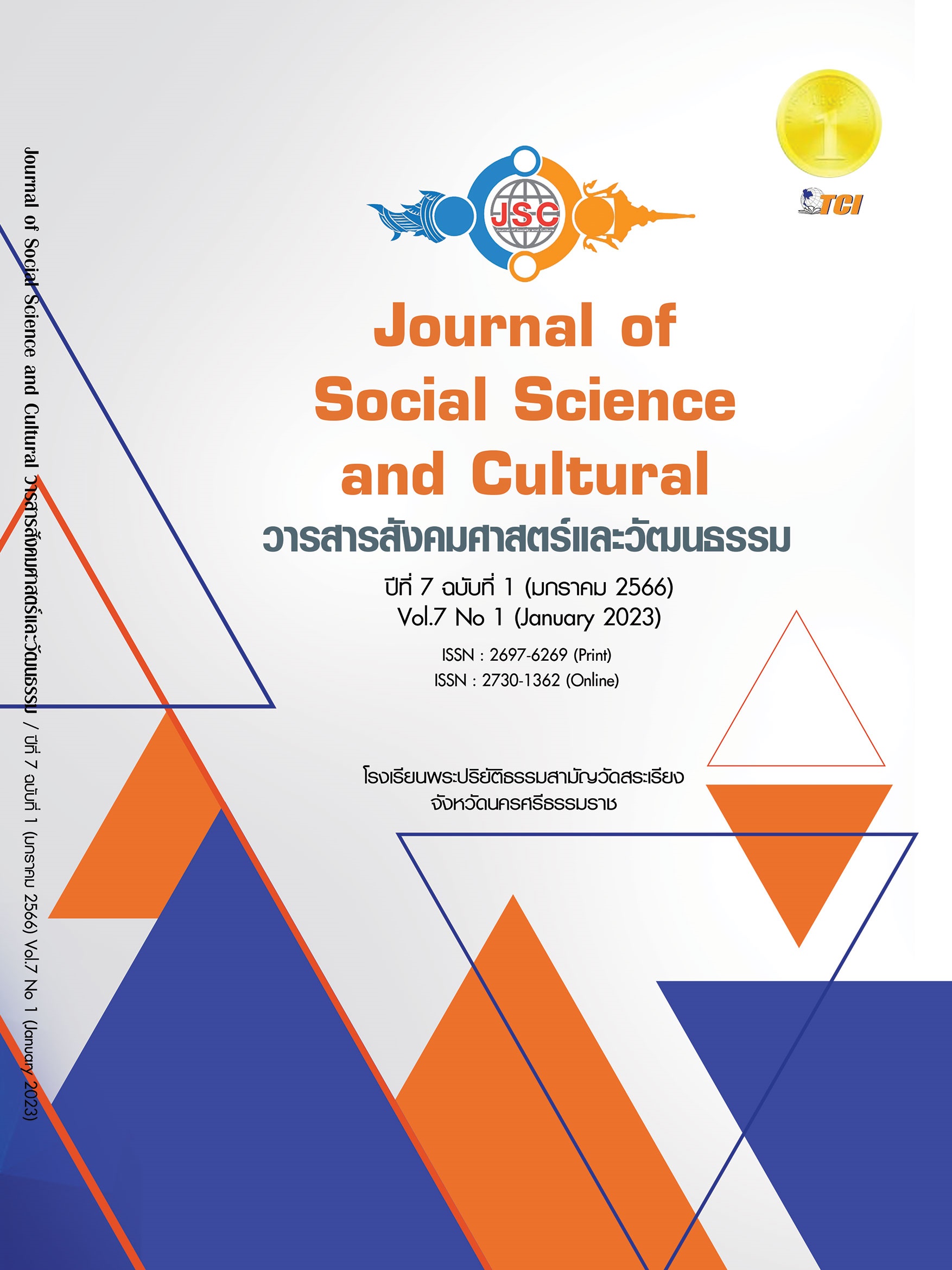A STRUCTURAL EQUATION MODEL OF FACTORS AFFECTING EXCELLENCE OF BASIC EDUCATION SCHOOLS
Main Article Content
Abstract
The objectives of this research article were to 1) analyze components of excellence and factors affecting excellence of basic education schools, 2) examine the congruence of a constructed theory-based structural equation model of factors affecting excellence of basic education schools and empirical data, and 3) analyze direct, indirect, and total effects of the factors affecting excellence of basic education schools. The quantitative research method population were directors of World-Class Schools under the Office of the Basic Education Commission. 680 samples derived by stratified sampling. The research instrument was a constructed rating-scale questionnaire. A statistical package was used to analyze the confirmatory factors and to examine the congruence between the constructed theory-based structural equation model and empirical data. The findings are as follows: 1) Excellence of basic education schools had components as follows; director quality, teacher quality, academic quality, student quality, and research and development. Key factors affecting excellence of basic education schools were leadership, strategic management, human resource management, and quality culture. 2) The developed structural equation model of the factors affecting excellence in basic education schools was congruent with the empirical data. 3) Factors as direct effects, indirect effects, and total effects on excellence of basic education schools are as follows. 1) the direct effects were quality culture, strategic management, human resource management, and leadership. 2) The indirect effects were quality culture, leadership, and human resource management. 3) The total effects were strategic management, leadership, human resource management. and quality culture.
Article Details
References
ปกรณ์ ปรียากร. (2553). การวางแผนกลยุทธ์: แนวคิดและแนวทางเชิงประยุกต์. กรุงเทพมหานคร: เสมาธรรม.
พูลพงศ์ สุขสว่าง. (2556). โมเดลสมการโครงสร้าง (Structural Equation Modeling). กรุงเทพมหานคร: วัฒนาพานิช.
สถาบันเพิ่มผลผลิตแห่งชาติ. (2554). เกณฑ์รางวัลคุณภาพแห่งชาติเพื่อองค์กรที่เป็นเลิศ ปี 2555 - 2556. กรุงเทพมหานคร: พงษ์วรินการพิมพ์.
สมคิด สร้อยน้ำ. (2557). การพัฒนาตัวแบบองค์การแห่งการเรียนรู้ในโรงเรียนมัธยมศึกษา. ใน วิทยานิพนธ์ปรัชญาดุษฎีบัณฑิต สาขาวิชาการบริหารการศึกษา. มหาวิทยาลัยขอนแก่น.
สัมฤทธิ์ กางเพ็ง. (2551). ปัจจัยทางการบริหารที่มีอิทธิพลต่อประสิทธิผลของโรงเรียน: การพัฒนาและการตรวจสอบความตรงของตัวแบบ. ใน วิทยานิพนธ์ศึกษาศาสตร์ดุษฎีบัณฑิต สาขาวิชาการบริหารการศึกษา. มหาวิทยาลัยขอนแก่น.
สำนักงานคณะกรรมการการศึกษาขั้นพื้นฐาน. (2557). เกณฑ์คุณภาพการศึกษาเพื่อการดำเนินการที่เป็นเลิศ 2552-2553. กรุงเทพมหานคร: ภาพพิมพ์.
สำนักงานเลขาธิการสภาการศึกษา. (2552). รายงานสภาวะการศึกษาไทย 2550/2551: ปัญหาความเสมอภาคและคุณภาพของการศึกษาไทย. กรุงเทพมหานคร: วีทีชีคอมมิวนิเคชั่น.
สำนักงานเลขาธิการสภาการศึกษา. (2558). สภาพการจัดการศึกษาเฉพาะทางในประเทศไทย ปี 2556: การผลิตบุคลากร. กรุงเทพมหานคร: พริกหวานกราฟฟิค.
สำนักงานสภาพัฒนาการเศรษฐกิจและสังคมแห่งชาติ. (2564). สรุปผลการจัดอันดับความสามารถในการแข่งขันของประเทศไทยโดยสถาบัน IMD ปี 2564. เรียกใช้เมื่อ 15 พฤศจิกายน 2564 จาก https://www.imd.org/centers/world-competitiveness-center/rankings/world-competitiveness/
สำนักบริหารงานการมัธยมศึกษาตอนปลาย สำนักงานคณะกรรมการการศึกษาขั้นพื้นฐานกระทรวงศึกษาธิการ. (2555). แนวทางการดำเนินงานโรงเรียนที่เข้าร่วมโครงการโรงเรียนมาตรฐานสากล. กรุงเทพมหานคร: โรงพิมพ์ชุมนุมสหกรณ์การเกษตรแห่งประเทศไทยจำกัด.
สุภมาส อังศุโชติ และคณะ. (2557). สถิติวิเคราะห์สำหรับการวิจัยทางสังคมศาสตร์และพฤติกรรมศาสตร์: เทคนิคการใช้โปรแกรม LISREL. พิมพ์ครั้งที่ 4 (ฉบับปรับปรุง). กรุงเทพมหานคร: เจริญดีมั่นคงการพิมพ์.
เสริมศักดิ์ วิศาลาภรณ์ และคณะ. (2555). รูปแบบเครือข่ายการพัฒนาครูและบุคลากรทางการศึกษาตามพระราชบัญญัติการศึกษาแห่งชาติ พ.ศ. 2542. ใน รายงานวิจัย. สำนักงานคณะกรรมการข้าราชการครู.
Alfred, D., & Chandler, J. (1962). Strategy and Structure. Cambridge, MA: The M.I.T. Press.
Calman, R.C. (2010). Exploring the Underlying Traits of High-Performing School. Retrieved November 15, 2010, from http://www.eqao.eom/Research/pdf/ E/ExploringUnderlyingTraits_web.pdf
Cranny, C.J., et al. (1992). Job Satisfaction: How People Feel About Their Jobs and How it Affects Their Performance. New York: Maxwell Macmillan International.
Davies, B., & Ellison, L. (1997). Futures and Strategic Perspectives in School Planning. Retrieved November 15, 2010, from https://www.researchgate. net/publication/44826560_ Futures_and_ strategic_perspectives_in_ school_planning
EFQM. (2010). The European Foundation for Quality Management Excellence Model. Retrieved October 5, 2011, from http://www.efqm.org/en/
Erdfelder, E., et al. (2009). Statistical Power Analyses Using G*Power 3.1: Tests for Correlation and Regression Analyses. Behavior Research Methods, 41, 1149-1160.
Hair, J.F., et al. (2014). Multivariate data analysis, New International edition. Harlow: Pearson Education.
Miller, J. & Allison, D. (1992). Improving Quality in Further. New York: McGraw- Hill.
Peters, T.J., et al. (1982). In Search of Excellence: Lesson from American’s Best Run Companies. New York: Harper and Row.
Purkey, S.C. & Smith, M.S. (1983). Effective Schools: A Review. Elementary School Journal, 83(4), 427-52.
Sallis, E. (2002). Total Quality Management in Education (3rd ed). London: Kogan Page.
Schumacker, R.E. & Lomax, R.G. (2010). A beginner’s guide to structural equation modeling. (3rd ed.). NJ: Lawrence Erlbaum Associates.
Spanbauer, S.J. (1992). A Quality System for Education. Hardcover: Quality Press.


